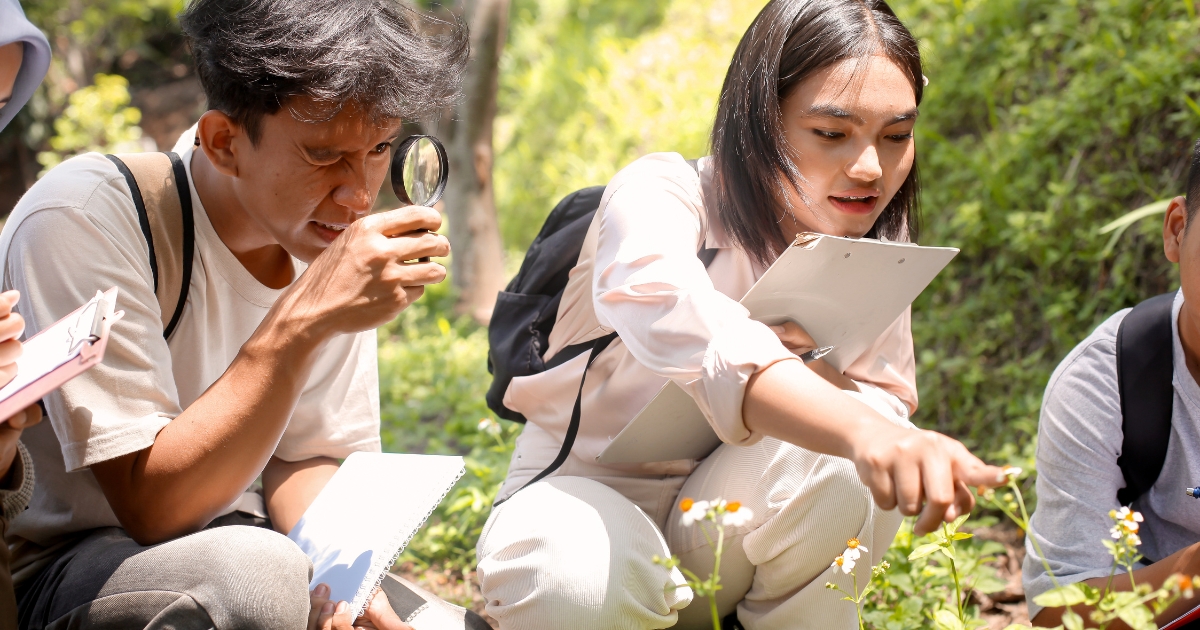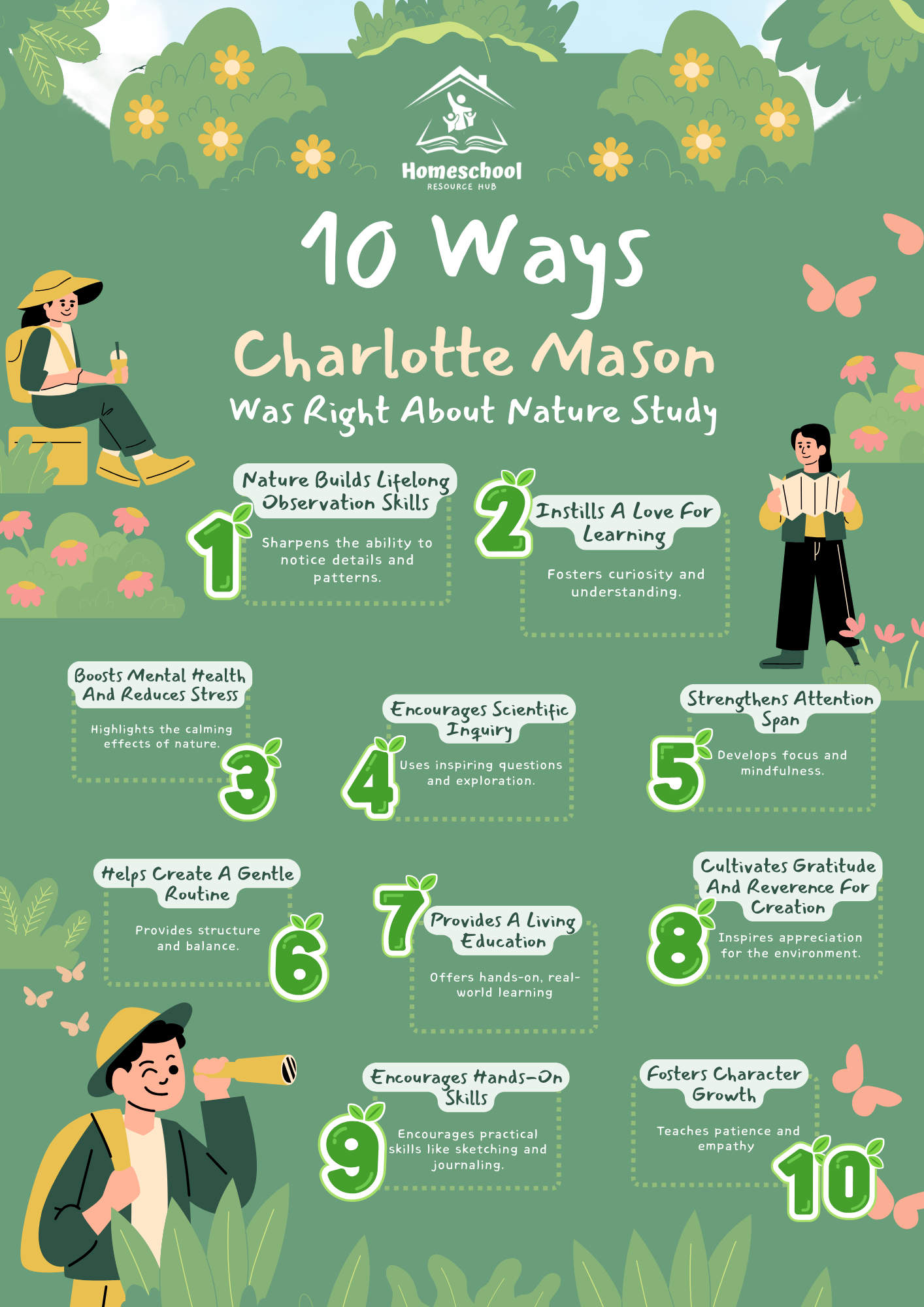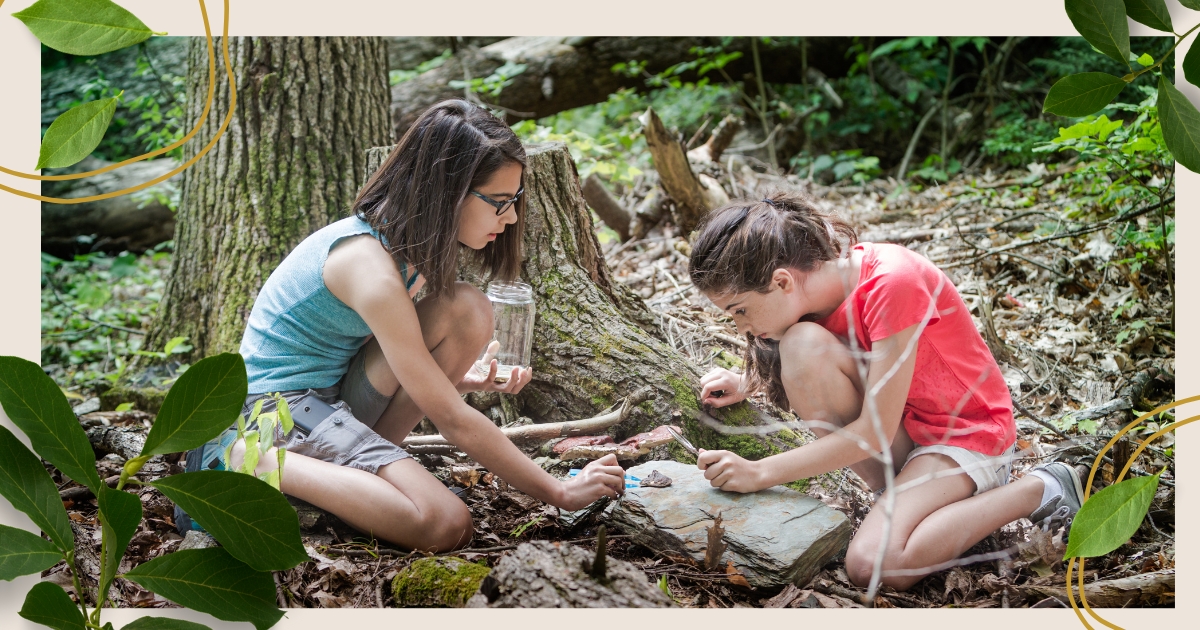Nature is more than a backdrop for family hikes or a playground for kids. For homeschool families, it’s one of the most effective and overlooked educational tools. Charlotte Mason, a 19th-century educator who profoundly influenced modern homeschooling, believed deeply in the power of nature to shape minds, character, and curiosity. Her ideas remain as relevant today as they were in her time, offering countless benefits to contemporary homeschooling methods.
Here are 10 ways Charlotte Mason’s nature study methods can benefit your homeschool.
1. Nature Builds Lifelong Observation Skills
Charlotte Mason advocated for getting children outdoors regularly, where they could develop keen observation skills. The goal was simple but profound—to train children to carefully notice the world around them. This practice aligns perfectly with modern homeschooling. Observation encourages critical thinking and attention to detail, which are essential for many academic disciplines like science, art, and even history.
- How to Incorporate This: Take outdoor walks where children are encouraged to notice small details like the veins on a leaf, the texture of bark, or the songs of birds. Keep the walks short with younger children but increase the time as they grow.
- Practical Tip: Provide magnifying glasses or binoculars for closer exploration. You’ll be amazed at how many questions naturally arise when kids look closely.
2. Instills A Love For Learning
Charlotte Mason’s nature study methods are not about memorizing botanical terms or completing worksheets. Instead, this approach fosters a love for discovery. By simply observing and interacting with the natural world, children learn organically, often without realizing they’re “studying.”
- How to Incorporate This: Designate a regular “nature study day” and treat it as an adventure instead of a lesson. Encourage exploration of a stream, collecting wildflowers, or identifying insects while letting curiosity take the lead.
- Practical Tip: Show excitement yourself. When your enthusiasm for nature is apparent, your children will mimic that same energy.

3. Boosts Mental Health And Reduces Stress
Homeschooling families often juggle academics while securing strong emotional bonds. This can sometimes lead to stress—for both parents and kids. Mason’s emphasis on nature helps alleviate this. Studies show that spending time outdoors reduces cortisol levels and improves mood, which indirectly benefits learning.
Taking a break from indoor routines and textbooks to enjoy the fresh air can rejuvenate everyone, making lessons indoors more productive.
- How to Incorporate This: Plan your outdoor time during transitions between challenging subjects. For instance, spend 15 minutes outside after math before moving on to reading.
- Practical Tip: Even urban families can benefit by visiting nearby parks or using their backyard for quick mental resets.
4. Encourages Scientific Inquiry
Charlotte Mason believed that spending time in nature naturally kindled curiosity about the sciences. A child who watches ants carrying food to their colony may begin asking questions about ecosystems, teamwork, or biology. With gentle guidance, these observations become springboards for deeper learning.
- How to Incorporate This: Use questions like, “Why do you think the soil here is different from the park?” or “What might happen to this pond in winter?” Treat observations as gateways to topics like earth science, biology, or meteorology.
- Practical Tip: Keep basic tools on hand, such as field guides, sketching notebooks, and a small microscope to encourage deeper exploration.
5. Strengthens Attention Span
Unlike fast-paced screens or toys with flashing lights, nature engages children in a slower, sustained form of attention. Mason understood this, appreciating how nature study could help children build patience and concentration. These skills are invaluable, both for higher learning and daily life.
- How to Incorporate This: Encourage kids to sit quietly and observe a specific spot for a few minutes. Can they spot the changes, like a bird moving or a flower shifting in the wind?
- Practical Tip: Challenge older kids to sketch plants or animals they encounter in order to train focus and attention.

6. Helps Create A Gentle Routine
Charlotte Mason valued rhythm and structure but believed strongly in allowing for flexibility. Nature study offers the perfect balance. By incorporating daily, weekly, or seasonal nature walks into your homeschool, you create a calming routine that fosters a sense of stability for your children.
It’s not about forcing kids to clock hours outside every day. Even small, consistent moments add up to a rich educational experience.
7. Provides A Living Education
Mason often spoke of a “living education,” where real experiences trumped canned lessons. Nature epitomizes this. Rather than reading about river ecosystems in a textbook, students can experience a riverbank firsthand. Seeing the flow of water, observing fish and plant life, and feeling wet soil teaches more than any diagram could.
- How to Incorporate This: Turn local parks, gardens, or even your backyard into your classroom. Observe animals and plants as they truly function.
- Practical Tip: Use nature excursions as jumping-off points for other subjects. For example, a study on tree rings could inspire math (counting growth years) or art (creating tree-inspired crafts).
8. Cultivates Gratitude And Reverence For Creation
One of Charlotte Mason’s most cherished ideas was using nature to inspire awe and gratitude. Observing the beauty and complexity of the natural world fosters an appreciation for the Earth and its Creator. This quality is often lifelong, shaping children into adults who value and protect nature.
- How to Incorporate This: Help your children keep gratitude journals specifically for nature. They can list moments or things they’ve appreciated during their outdoor time.
- Practical Tip: Engage in scavenger hunts to discover hidden beauties, like spotting dew drops on spiderwebs or counting shades of green in a meadow.
9. Encourages Hands-On Skills
Nature study goes beyond observation when children engage with the environment in hands-on ways. For example, gathering leaves, building simple bird feeders, or planting a small garden. These moments make learning tactile and rooted in reality, which reinforces deeper understanding.
Spending time handling nature also nurtures a scientific mindset. Kids learn to classify objects, notice patterns, and use hypotheses, solid foundations for STEM learning.
10. Fosters Character Growth
Perhaps one of the most overlooked benefits of nature study is the way it shapes character. Mason saw outdoor education as a way to nurture qualities like humility, perseverance, and resourcefulness. Whether it’s patiently waiting for a butterfly to land or persisting on a long hike, nature allows kids to face small challenges that build resilience.
It also teaches stewardship. When kids recognize the beauty and fragility of an ecosystem, they instinctively care more about protecting the environment, which says a lot about the adults they will grow to become.
Take moments to celebrate each character milestone you notice. Whether your child overcomes a fear of picking up a worm or successfully grows vegetables in a garden bed, these lessons extend beyond academics.
Homeschooling with nature-based learning offers a world of possibilities for both you and your children. Every observation, every question, and every outdoor minute strengthens your homeschool experience while instilling a lifelong love of learning. The beauty of Charlotte Mason’s methods lies in their simplicity and adaptability. With small efforts, you’ll find that your children begin to notice the first blooms of spring, sketch birds they see in winter, and rekindle your own appreciation for the natural world.
If you’re new to nature study, start small. Create a schedule, grab a few basic supplies, and introduce structured activities like nature journaling or photography challenges. With these strategies, you’ll see firsthand how nature study sparks curiosity, builds patience, and lays a solid foundation for learning, memories, and character formation.





